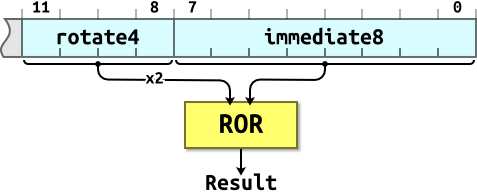ARM > Introduction to ARM > Immediate Values
Remarks
The impact of this is that some constants are “ARM friendly”. Some are not. Study of the numbers you’re using can sometimes reveal scope for optimisation.
Previous topic:
Operand2
Next topic:
Branch Instructions
